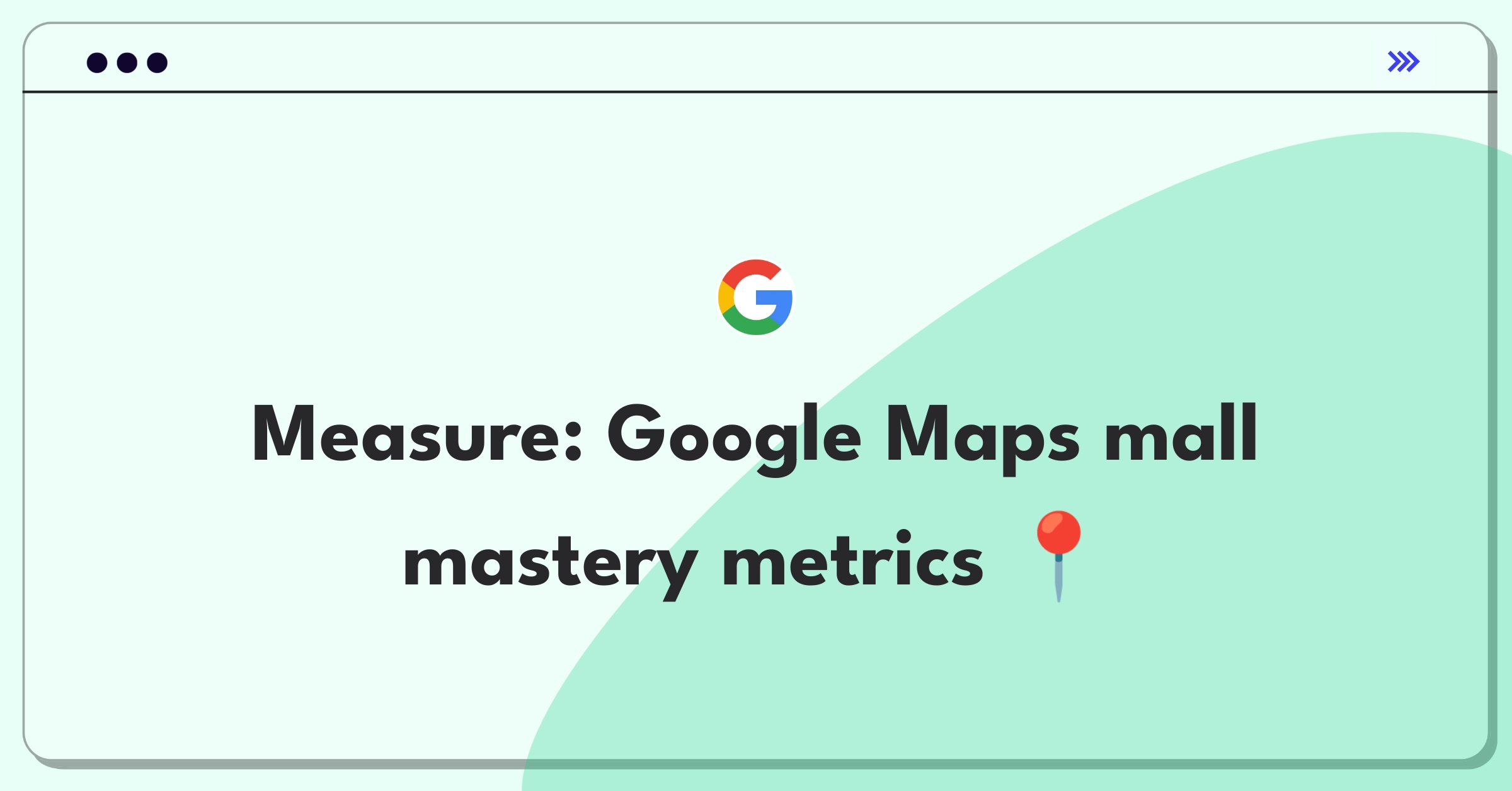Introduction
Measuring the success of Google Maps in a shopping mall context presents a unique challenge that requires a nuanced approach to product metrics. To effectively address this product success metrics problem, I'll follow a structured framework that covers core metrics, supporting indicators, and risk factors while considering all key stakeholders.
Framework Overview
I'll follow a simple success metrics framework covering product context, success metrics hierarchy, and strategic initiatives.
Step 1
Product Context
Google Maps in a shopping mall setting serves as a digital wayfinding solution, helping visitors navigate complex indoor environments. Key stakeholders include:
- Mall visitors: Seeking efficient navigation and discovery of stores/services
- Mall management: Aiming to enhance visitor experience and increase foot traffic
- Retailers: Wanting increased visibility and customer flow
- Google: Expanding Maps' utility and gathering valuable location data
The user flow typically involves:
- Opening the app and locating the mall
- Searching for a specific store or browsing categories
- Following turn-by-turn directions to reach the destination
This feature aligns with Google's broader strategy of making the world's information universally accessible and useful, extending Maps' capabilities from outdoor to indoor spaces. Compared to competitors like Apple Maps, Google Maps often has more comprehensive indoor mapping data and a larger user base.
In terms of product lifecycle, indoor mapping for malls is in the growth stage, with increasing adoption but still room for significant expansion and refinement.
Subscribe to access the full answer
Monthly Plan
The perfect plan for PMs who are in the final leg of their interview preparation
$99.00 /month
- Access to 8,000+ PM Questions
- 10 AI resume reviews credits
- Access to company guides
- Basic email support
- Access to community Q&A
Yearly Plan
The ultimate plan for aspiring PMs, SPMs and those preparing for big-tech
$99.00 $33.00 /month
- Everything in monthly plan
- Priority queue for AI resume review
- Monthly/Weekly newsletters
- Access to premium features
- Priority response to requested question


.png)